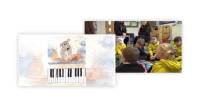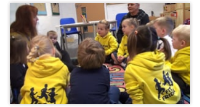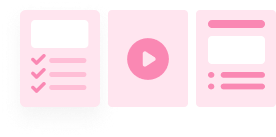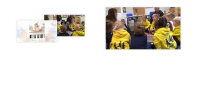More Maestro the Dog Stories Level: Early Grades - Skills & games
Music Lesson Description
Using Keyboards
All the activities here are for supervised individual children or pairs of children. A keyboard or piano is ideal but a large sized xylophone has low-pitched notes and would be a good alternative.
Lots of Notes and One-at-a-Time Notes (texture, dynamics)
Just like Hannah, the children can experiment with playing lots of notes (thick texture) at the same time, and then playing some notes one at a time (thin texture). They can try playing loudly and quietly too. There's no reason not to use the correct, elements of music words to describe what the children are doing - they will eventually pick up the meaning through the context and through doing if the words are used frequently enough.

Make Low-Pitched Whale Music (pitch, dynamics)
Most children first think that low means low volume, not low pitch, but it's nothing to do with loud or quiet. You will almost certainly need to explain which are the low notes by asking the children to experiment and listen because, on a keyboard or piano, all the keys look the same and it's not obvious that the low notes are to the left and high notes are to the right.
What to do - Using both hands, the children play low-pitched notes slowly and rock gently from side to side as if under water. Once they get the idea of low pitch, you can then ask for low and quiet or low and loud. It's ok to introduce the correct word, dynamics for loud and quiet at this point.

Make High-Pitched Monkey Music (pitch, tempo)
Still using the piano, keyboard or tuned percussion instrument, the children play high notes this time, quickly like a little monkey running around. Again, you could talk about a fast tempo so that the children learn the meaning of tempo through doing and through context.
All Maestro the Music Dog materials ©Music-Playtime: Arts Enterprise Limited






